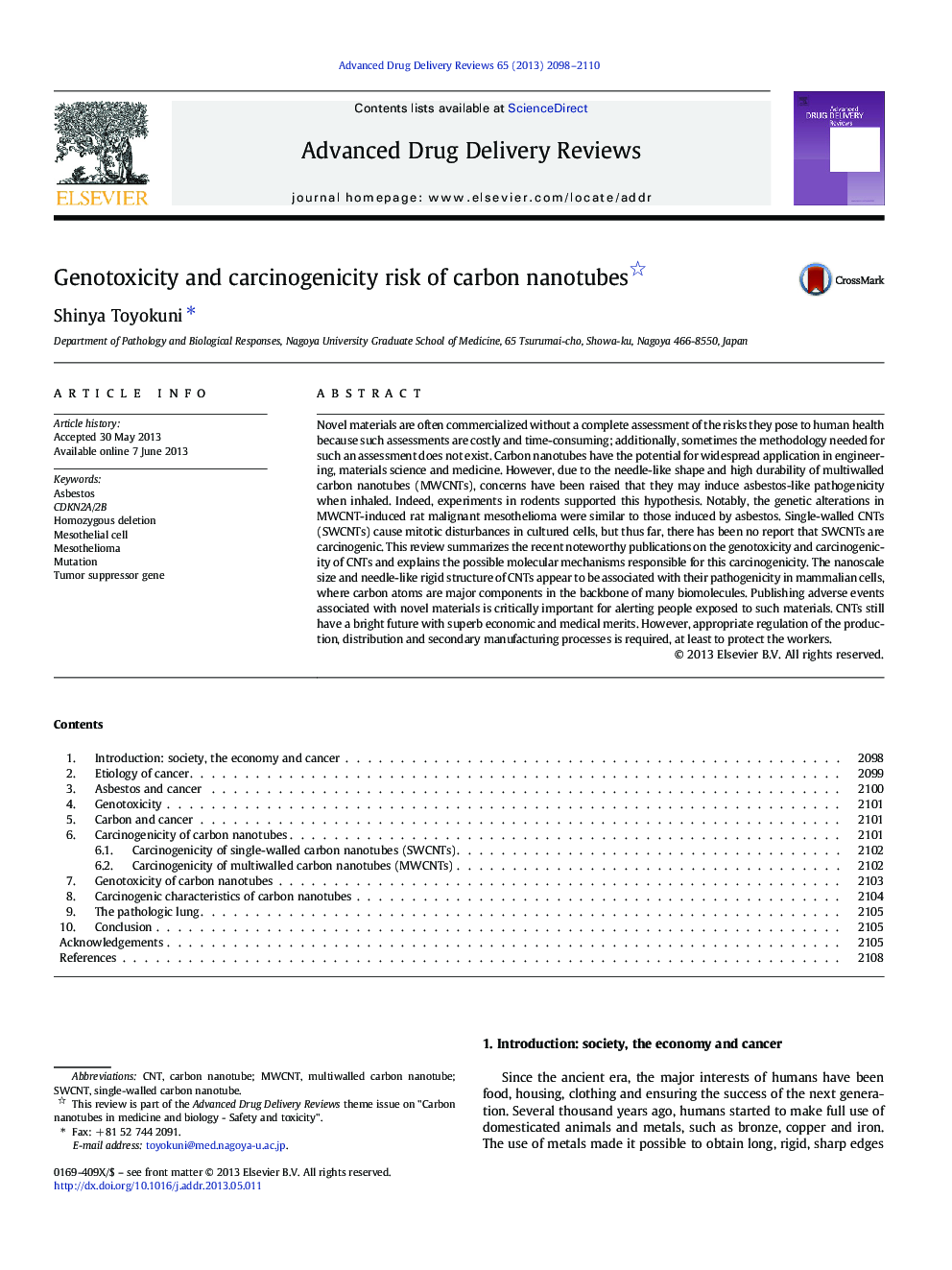| Article ID | Journal | Published Year | Pages | File Type |
|---|---|---|---|---|
| 2070980 | Advanced Drug Delivery Reviews | 2013 | 13 Pages |
Novel materials are often commercialized without a complete assessment of the risks they pose to human health because such assessments are costly and time-consuming; additionally, sometimes the methodology needed for such an assessment does not exist. Carbon nanotubes have the potential for widespread application in engineering, materials science and medicine. However, due to the needle-like shape and high durability of multiwalled carbon nanotubes (MWCNTs), concerns have been raised that they may induce asbestos-like pathogenicity when inhaled. Indeed, experiments in rodents supported this hypothesis. Notably, the genetic alterations in MWCNT-induced rat malignant mesothelioma were similar to those induced by asbestos. Single-walled CNTs (SWCNTs) cause mitotic disturbances in cultured cells, but thus far, there has been no report that SWCNTs are carcinogenic. This review summarizes the recent noteworthy publications on the genotoxicity and carcinogenicity of CNTs and explains the possible molecular mechanisms responsible for this carcinogenicity. The nanoscale size and needle-like rigid structure of CNTs appear to be associated with their pathogenicity in mammalian cells, where carbon atoms are major components in the backbone of many biomolecules. Publishing adverse events associated with novel materials is critically important for alerting people exposed to such materials. CNTs still have a bright future with superb economic and medical merits. However, appropriate regulation of the production, distribution and secondary manufacturing processes is required, at least to protect the workers.
Graphical abstractFigure optionsDownload full-size imageDownload high-quality image (167 K)Download as PowerPoint slide
